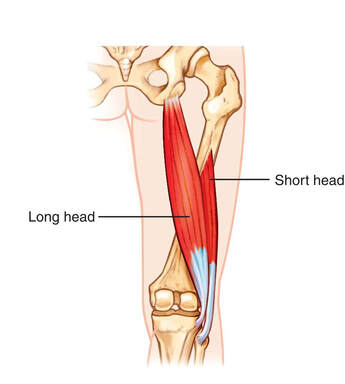 During the first year of training to be an osteopath I spent a lot of time learning anatomy from textbooks. These books describe structures and tell you the names, locations, relations (what is around it), blood supply and nervous supply, amongst other useful information and we (try to) learn these by rote so we can pass our anatomy exams. Some time later…it was the third year of training for me…I suddenly realised that I could differentiate between two structures at different depths by reference to my anatomical knowledge and comparing the shape and, particularly in the case of muscles, lines of force. My particular road to Damascus moment occurred when I felt something pulling up towards the neck from the angle of the scapula (part of the shoulderblade). The trapezius muscle is the most superficial muscle here but I realised the fibres don’t run in that direction, whereas underneath it is levator scapulae and this line of tightness corresponded exactly with where that muscle should run. Over time I became more and more able to differentiate between different structures using this method and I rarely think about the textbook anatomy. Today a patient came in with a pain in his buttock (we joked that I should entitle this, ‘the pain in the bum patient’). On examination the tender bit was in the lower part of gluteus maximus, just above the ischial tuberosity (sitting or sitz bone) but the area affected didn’t run in the same direction as the fibres of that muscle, nor indeed the small internal rotator muscles that lie underneath (and provoking those muscles didn’t recreate the pain), it was also a bit too high to be ischiogluteal bursitis. I was stymied for a moment…and then I remembered that I had read a paper highlighting that a significant minority of people had an anatomical variation whereby their biceps femoris (the outer hamstring) either additionally or often alternatively attached to the transverse ligaments of the sacroiliac joint rather than the ischial tuberosity and realised that this explained the symptoms in this location. There are many anatomical variations, extra ribs at the top or bottom of the ribcage, extra or fewer vertebrae (actually just more or less of them that are not fused; kidneys and nipples often appear in greater number than is standard and sesamoid bones are non-standard parts in more than one place in the body. Understanding how ‘the body’ works is a wonderful thing, understanding how the body underneath my hands is put together is even more exciting
0 Comments
Your comment will be posted after it is approved.
Leave a Reply. |
Archives
February 2024
AuthorDamian is the principal osteopath at Vauxhall Village Osteopathy and Oval Osteopathy Categories
All
|


 RSS Feed
RSS Feed


